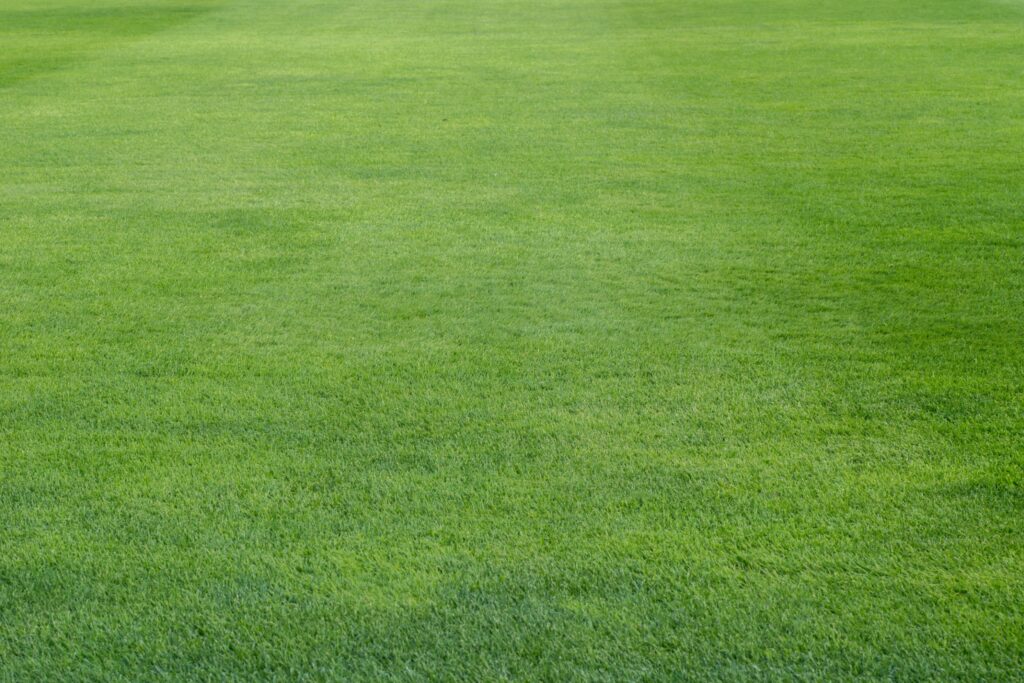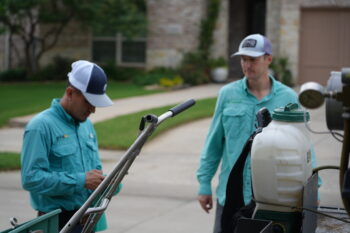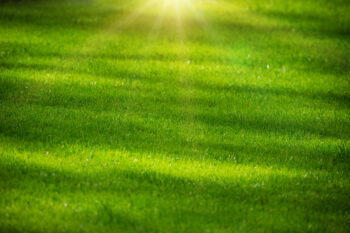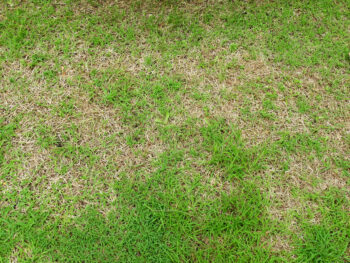A lush, green lawn is the pride of all homeowners. Although, sometimes even a lawn that looks healthy needs a little extra care to maintain its vitality. One important aspect of lawn maintenance that often gets overlooked is dethatching. Now, what is dethatching? And, why is it crucial for the health of your lawn?
In this article, we will explore the ins and outs of dethatching so you can get started on beautifying your lawn today.
What is Dethatching?
Dethatching, also known as power raking, is the process of removing the layer of dead grass, roots, and debris that accumulates between the soil and the living grass blades. This layer, known as thatch, can prevent nutrients, water, and air from reaching the roots of your grass, leading to a weakened and unhealthy lawn.
A moderate level of thatch is beneficial for a lawn. Shoot for around 1/2 inch. That amount of thatch will help conserve moisture keep the soil at an even temperature.
Russell (2018) quoted turfgrass specialist Becky Grubbs, “thatch can help provide a good growing environment for grasses, but excess thatch can prevent water and oxygen from reaching plant roots and create conditions for diseases.”
What Does Dethatching Do?
Dethatching is an essential lawn care practice that helps revitalize your lawn by removing the thick layer of dead grass, roots, and other organic debris known as thatch. However, as previously stated, when thatch builds up to over 1/2 inch thick, it starts causing problems.
An excessive thatch layer prevents nutrients, air, and water from penetrating down to the grass roots. It also creates an ideal breeding ground for lawn diseases and pests.
By dethatching your lawn annually with a specialized dethatching rake or machine, you remove this thick mat of dead organic matter. This allows the lawn to breathe easier, absorb water and fertilizer more readily. Moreover, dethatching encourages the growth of a lush, healthy lawn.
How to Measure Thatch Thickness
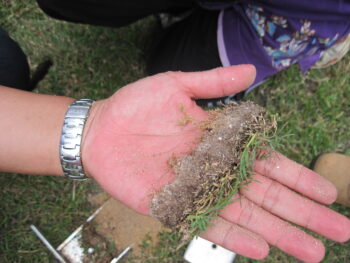
Taylor et al. (1917) A lawn that has too much thatch feels spongy and tends to scalp when mowed. To estimate thatch thickness, use a soil probe, spade or knife to remove a small section of turf and the underlying soil. Figure 1 illustrates the thatch layer. Measure the thatch layer with a ruler. If the estimated thatch thickness is greater than 1/2 inch, mechanical dethatching practices need to be used soon to reduce thatch levels (para. 4).
Benefits of Dethatching
- Promotes better air circulation and water penetration.
- Stimulates new growth and rejuvenates the lawn.
- Enhances nutrient absorption by the roots.
- Improves the overall health and appearance of the lawn.
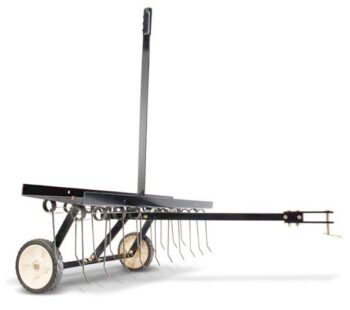
Types of Dethatchers
There are several types of dethatching equipment available, including manual dethatchers, power rakes, and vertical mowers.
Each type of dethatcher is designed to effectively remove thatch from the lawn and restore its health.
What are the Best Dethatchers?
When it comes to effectively removing thick thatch buildup from your lawn, having the right dethatching tool is essential. For smaller lawns, a dethatching rake with sharp, rigid tines can work well, though it requires significant effort.
For most homeowners, a power dethatcher is the better option as it saves time and labor. The best power dethatchers are gas-powered models that utilize a cylindrical dethatching reel or vertically-spinning flail blades to slice through the thatch layer and lift it out.
Look for a durable model with an adjustable deck height so you can control how aggressively it dethatchs based on your lawn’s needs. Models with wheeled sulky attachments are great for reducing strain. For the biggest jobs, you may want to rent a heavy-duty power rake – these are essentially ultra-aggressive dethatchers.
What Causes Thatch
Thatch buildup is a natural process in which grass clippings, dead roots, and other organic matter accumulate faster than they can decompose.
Factors such as over-fertilization, overwatering, and compacted soil can contribute to thatch formation.
Signs that a Lawn Needs to Be Dethatched
- Water pooling on the surface after watering.
- Reduced water absorption by the soil.
- Yellowing or thinning grass.
- Excessive thatch layer visible near the soil surface.
What Time of Year is Best to Dethatch?
The best time to dethatch cool-season grasses is in early spring or fall, while warm-season grasses are best dethatched in late spring or early summer. Choosing the right time ensures optimal recovery and growth after dethatching. Read more about cool season and warm season grasses.
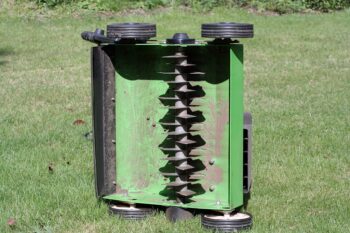
After Dethatching
After dethatching your lawn, it is an ideal time to aerate the soil. Aerating helps to relieve soil compaction and allows for better movement of air, water, and nutrients to the grass roots.
Combined with dethatching, aeration can greatly improve the overall health and rejuvenation of your lawn. Check out our lawn aeration service page.
After dethatching your lawn, it’s important to thoroughly clean up the debris and dead grass that has been removed. This can be done either by raking or using a mower with a bag attachment to collect the debris.
It’s also a good idea to fertilize your lawn after dethatching to provide essential nutrients for healthy regrowth. Water your lawn deeply but avoid overwatering to prevent waterlogging the soil.
It’s best to stay off the lawn for a few days after dethatching to allow it to recover and regrow. With some proper care and attention, your lawn will soon be looking greener and healthier than ever!
How to Prevent Thatch
- Avoid over-fertilizing. Outsource this chore and get it right the first time. Go to our lawn fertilization service page.
- Mow the lawn at the correct height. Get your weekends back with our lawn mowing service.
- Ensure proper watering and aeration.
- Regularly dethatch as part of your lawn maintenance routine.
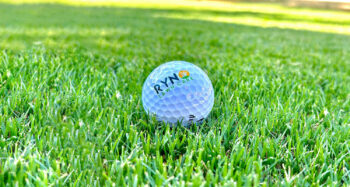
Conclusion
Dethatching is a vital part of lawn care that can significantly impact the health and appearance of your grass. Take the bull by the horns this spring and dethatch you lawn. Your turf will remain lush, vibrant, and thriving all season long.
Don’t overlook the importance of dethatching in your lawn care regimen—it’s the key to a healthier and more beautiful lawn for years to come.
References
Russell, A. (2018, April 17). Turfgrass tips to make a lawn the envy of the neighborhood. Agrilife Today. https://agrilifetoday.tamu.edu/2018/04/07/60191/
Taylor, G.R., Gray, J.L., & Abernathy, S. (1914, June 30). Thatch management for home lawns. Texas Agricultural Extension Service. http://publications.tamu.edu/TURF_LANDSCAPE/PUB_turf_Thatch%20Management%20for%20Home%20Lawns.pdf

